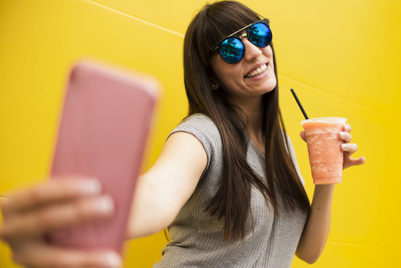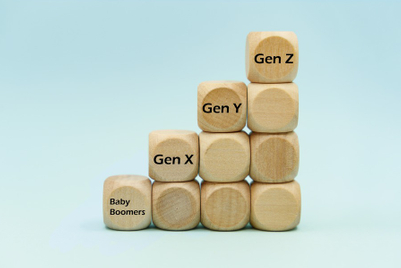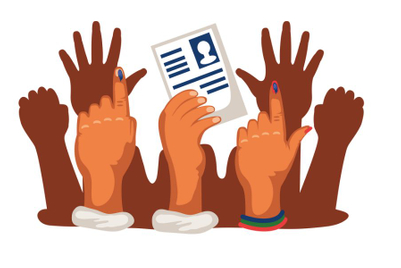.jpg&h=570&w=855&q=100&v=20250320&c=1)
In a world cluttered with boredom, doom-scrolling and pessimistic headlines, levity continues to lead. Amid hyper-serious and force-fitted purpose-based messaging, brands that dare to laugh and invite us to join them are commanding disproportionate attention and affection.
Playfulness in advertising is no longer just a genre; it can be a strategic advantage. As brands increasingly chase purpose and gravitas disproportionate to their category or context, a growing number are winning recall and trust through memes, satire, absurdist storytelling and cultural wit.
According to Deloitte’s 2024 Global Consumer Mood Index, 68% of Gen Z and millennials reported actively seeking out “light-hearted” or humorous content to cope with stress. These audiences aren’t rejecting purpose and meaning, they’re just tired of being overwhelmed by it.
The rise of escapist consumption
Rising stress and digital fatigue have reshaped content consumption patterns. The average adult now spends over seven hours per day consuming media, and a growing share of that is light or escapist in tone.
Almost a decade ago, Vodafone set the bar for minimalist, quirky, meme worthy ads with its Zoo Zoos mascots. The popularity of these white, egg-headed creatures became so great that it prompted the telecom service provider to even launch merchandise like T-shirts featuring them.
Other brands that also leaned into humour and cultural relatability in the past included Airtel, Ericsson, Tata Sky and Times of India. One can even call them the harbingers of the meme culture.
Once niche, this phenomenon now defines mainstream communication. Short, funny, self-aware content that reflects shared cultural moments dominate shared content online today.
And it’s not just entertainment-first platforms like YouTube and Instagram—even LinkedIn has seen a noticeable uptick in humourists and humour-driven posts. This isn't a one-off instance; it’s content gravitating towards what people want, in real time. Looks like the whistle has been blown to start playtime for brand marketers.
Defining play: A marketing reframe
To unlock its full potential, we must sharpen the definition of ‘play’ in a brand context. As a wise advertiser said, “Play is not the opposite of seriousness, it is the antidote to monotony.”
Amul Butter has managed to pull this off very well over the years. The brand, and its highly memorable mascot, the Amul Girl, have been the OG of topical humour, each delivered with a refreshing twist since 1966. This brainchild of the legendary Sylvester DaCunha continues to thrive in the digital age.

In advertising, the concept of play ranges from the banal to the sophisticated with multiple variables that can be leveraged by smart advertisers. This includes the tone of voice, which can be witty, irreverent, conversational, culturally in-the-know and sometimes controversial or provocative. Similarly, storytelling formats could be non-linear narratives, satire, parody, memes, hijacking popular news or content, candid camera, sitcom and episodic content.
All of these have to merge into the context in time, media or a social feed, which can increase the potency of humour. And just like one can’t play by themselves, play needs to foster a participatory culture. It should create opportunities for users to co-create (memes, remixes, taglines), strengthening brand intimacy.
This view helps agencies to leverage humour as a critical consumer experience, helping a brand make a consumer feel safe, seen and entertained in a dominating digital milieu. Think about how Fevicol has woven humour seamlessly into culturally resonant Indian settings with its print, digital and TVC ads. It transformed the category and raised the levels of involvement and brand recall in an otherwise commoditised category in most markets.
Why playful brands stick
Humour doesn’t just entertain; it hacks the brain. Dopamine, a hormone that is released during moments of laughter and delight, plays a central role in emotional memory formation. This explains why humorous ads often enjoy 2X higher recall compared to serious ones (Journal of Advertising Research, 2022).
Behavioural studies also highlight that likeability bias increases trust and lowers perceived risk. Consumers are more likely to try a new product from a brand they find funny or relatable.
Then there is the IKEA effect, a cognitive bias where people overvalue self-assembled items, named after the furniture brand. Studies show that people value experiences more when they’ve had a hand in creating them hence gamified content, memes, or user-generated campaigns leverage this effect.
People almost always ‘share’ humorous content as a means to become popular and seek social validation. As per this ‘Class clown’ effect, humour becomes an artefact of memorable social occasions. This makes humorous content likelier to go more viral than other genres.
Caution: Laughs ahead
Humour and play are not just a creative choice, but as a WARC study by Biprorshee Das shows, a biological and psychological accelerant for brand memorability and loyalty. However, humour must be applied thoughtfully and within the right context.
Play works best when the category allows emotional openness, for e.g. FMCG, fashion, lifestyle, food, dating or fintech. It lands well when the audience skews towards young, digitally native, and irony-literate people and where the brand already has some permission to be informal or quirky.
On the other hand, play can be risky when the context is sensitive—e.g., social issues, crises, health emergencies. The tone should not contradict product stakes (e.g., making light of serious topics like cybersecurity or insurance).
Also, when there is a lack of cultural nuance, humour that travels poorly can backfire globally. But when played well, humour can help disrupt the category. This strategic use of humour to own contrarian truths is exemplified by brands like Pidilite and the State Bank of India.
Play is serious business
Agencies play a crucial role in making the case for play. Many creative directors I have worked with are natural humourists and effortlessly blend humour even into their everyday conversations. They play a pivotal role in extracting the full potential of this genre through brands and the content they create.
To advocate for it with clients, present humour and play as strategic levers for driving engagement, brand salience, and cultural currency, not just laughs to grab eyeballs. Share campaign benchmarks and case studies with hard data (view-through rates, shareability, recall metrics). Allow them to ‘soak in’ the humour, let them share it with family and close friends and see the reaction for themselves.
When it comes to your creative team, ask them to present ideas in the natural habitat. Avoid PowerPoint and rely on story-telling and sharing the ideas as jokes agnostic of media or format.
Hire hybrid talent like meme-makers, humour writers, short-form video specialists, culturally aware Gen Z creators, who can stay ahead of trends and build trends. Foster psychological safety within teams; play requires risk-taking and failure tolerance.
Your content planning will also need to pivot to design modular, agile content that can adapt to real-time cultural moments. Allow for platform-native experimentation—especially on Facebook, Instagram Reels, and YouTube Shorts. Measure both performance and ‘cultural fame’ (mentions, memes, virality).
Play is no longer a flippant means of standing out. In today’s emotionally taxed world, it’s a vital branding strategy, one that humanises, delights, and ultimately endears. The light-hearted brand doesn’t trivialise reality; it offers a moment of respite, a reason to smile, and a connection rooted in joy.
As brands continue to chase purpose and sincerity, the ones that choose to do it with play, provided it is thoughtful and authentic, will not just stand out but will be remembered, shared, and loved.
To quote the purpose of a brand I worked on, ‘In a hyper-serious world, when we play, we connect.’
- Nikhil Rao, chief marketing officer, Mars Wrigley India









+(1).png&h=334&w=500&q=100&v=20250320&c=1)
.jpg&h=334&w=500&q=100&v=20250320&c=1)




.jpg&h=268&w=401&q=100&v=20250320&c=1)
.jpg&h=268&w=401&q=100&v=20250320&c=1)
.jpg&h=268&w=401&q=100&v=20250320&c=1)
.jpg&h=268&w=401&q=100&v=20250320&c=1)
.jpg&h=268&w=401&q=100&v=20250320&c=1)
